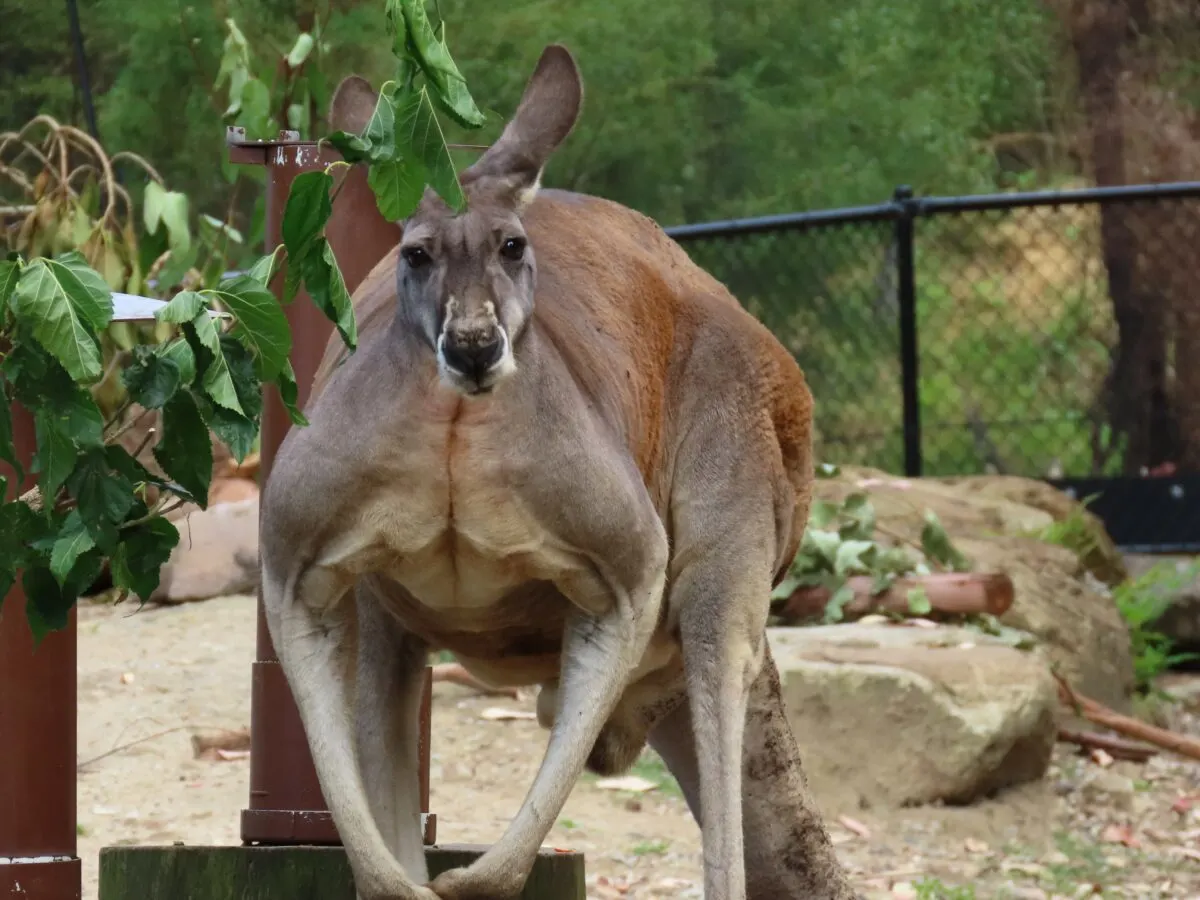Welcome to the wild world of kangaroos, where legends are made, and tales of extraordinary creatures abound. Today, we will dive deep into the story of a true giant among kangaroos, Big Jake – the largest Kangaroo ever recorded.
A Force To Be Reckoned With
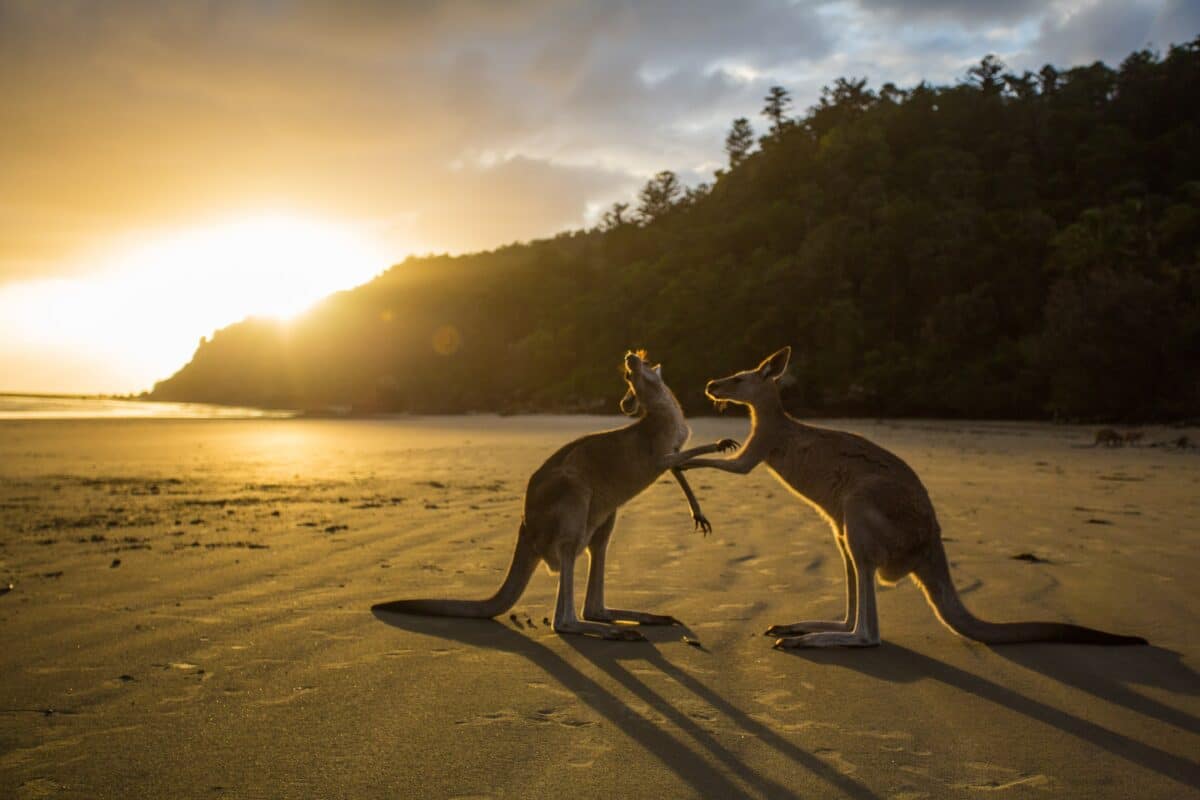
With his massive size and unparalleled strength, he was a force to be reckoned with in the wilds of Australia. But his story doesn’t end there. Join us as we explore what made Big Jake stand out and how his legacy as one of the largest kangaroos ever recorded lives on to this day.
Key Points
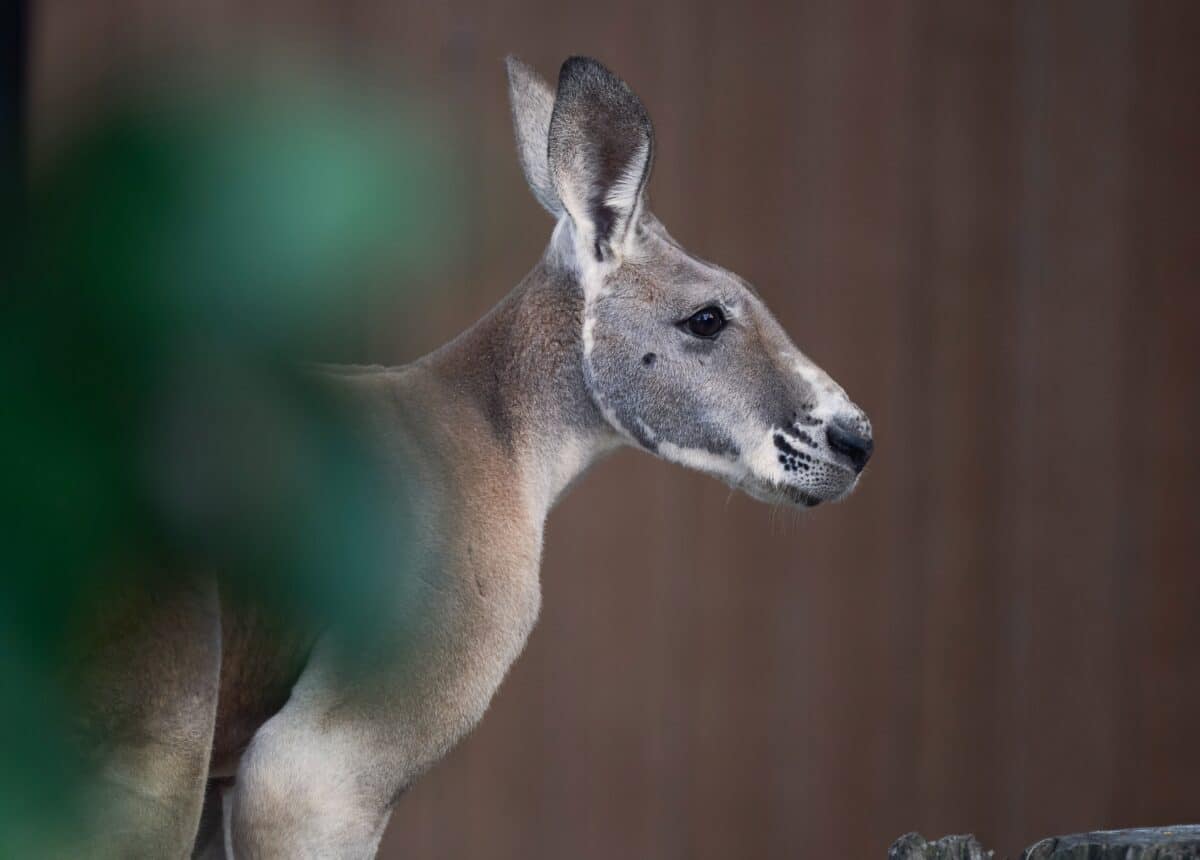
- Big Jake was born and raised in the wilds of Australia, where he grew up among his peers.
- He stood out from other kangaroos due to his massive size and presence, standing at an impressive 2.1 meters (6 feet, 10 inches) tall and weighing 95 kilograms (209 pounds).
- Big Jake was a dominant and formidable opponent in the wild, known for his fierce fighting and unparalleled dominance over other kangaroos.
- Despite his impressive size and strength, Big Jake was a gentle giant and a favorite among visitors to the wildlife park where he lived.
The Legend of Big Jake: The Largest Kangaroo Ever Recorded
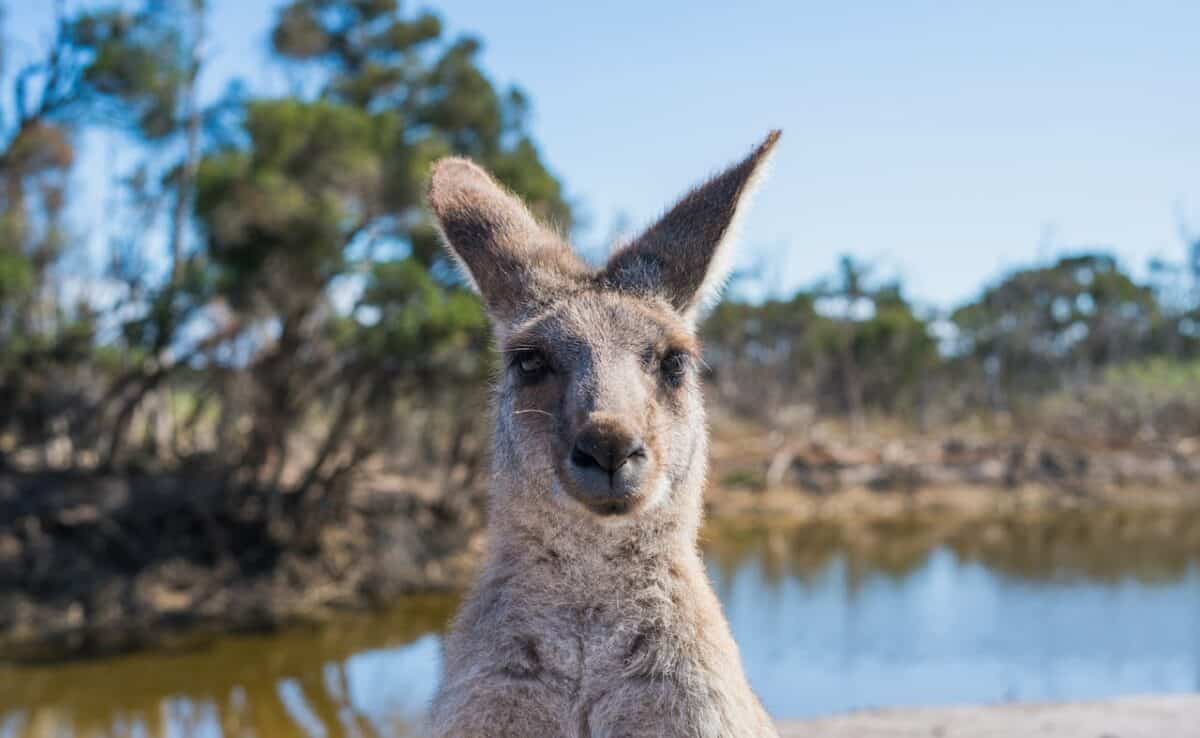
Today, we’ll be taking a closer look at the legend of Big Jake, one of the largest kangaroos ever recorded. As a wildlife enthusiast, I’m always fascinated by stories of remarkable animals; Big Jake is no exception.
Big Jake was born in the wilds of Australia, where he grew up alongside his peers. However, as he matured, it became apparent that he was unlike the other kangaroos. His size, strength, and dominance set him apart from his peers, making him a force to be reckoned with.
Big Jake was a giant among kangaroos at an impressive height of 2.1 meters (6 feet, 10 inches) and weighing in at a whopping 95 kilograms (209 pounds). His muscular build and powerful legs made him a fierce fighter, and his dominance over other kangaroos was unparalleled.
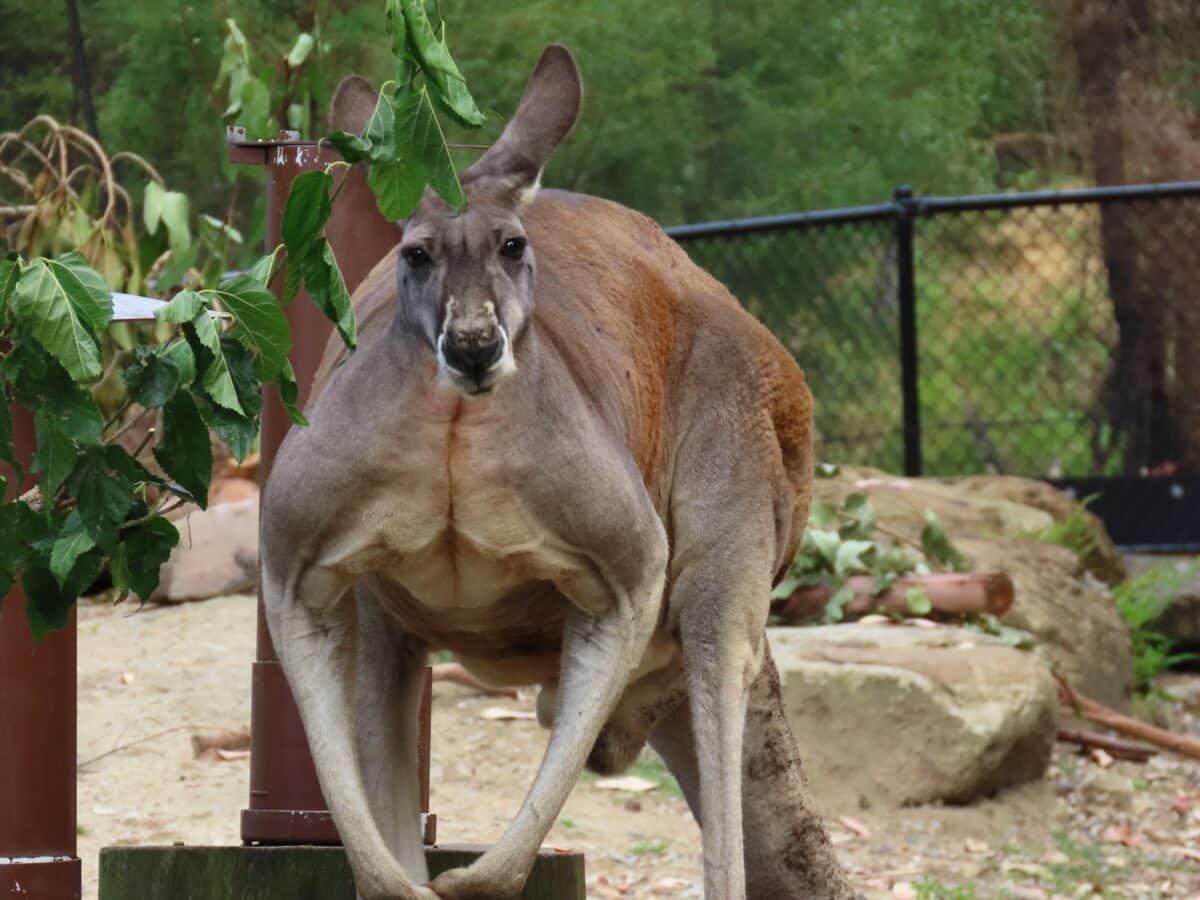
But Big Jake’s story doesn’t end there. After being captured by wildlife authorities, he was given a new home in a sanctuary, where he continued to live out his days in peace. Despite his size and strength, he was a gentle giant and a favorite among visitors to the wildlife park where he lived.
Big Jake’s impressive size was attributed to genetics, diet, and living conditions. Although he passed away in 2013 at 12, his legacy as the enormous Kangaroo ever recorded lives on.
As we marvel at the wonders of the animal kingdom, let’s take a moment to appreciate the incredible story of Big Jake, a true legend among kangaroos.
The Red Kangaroo
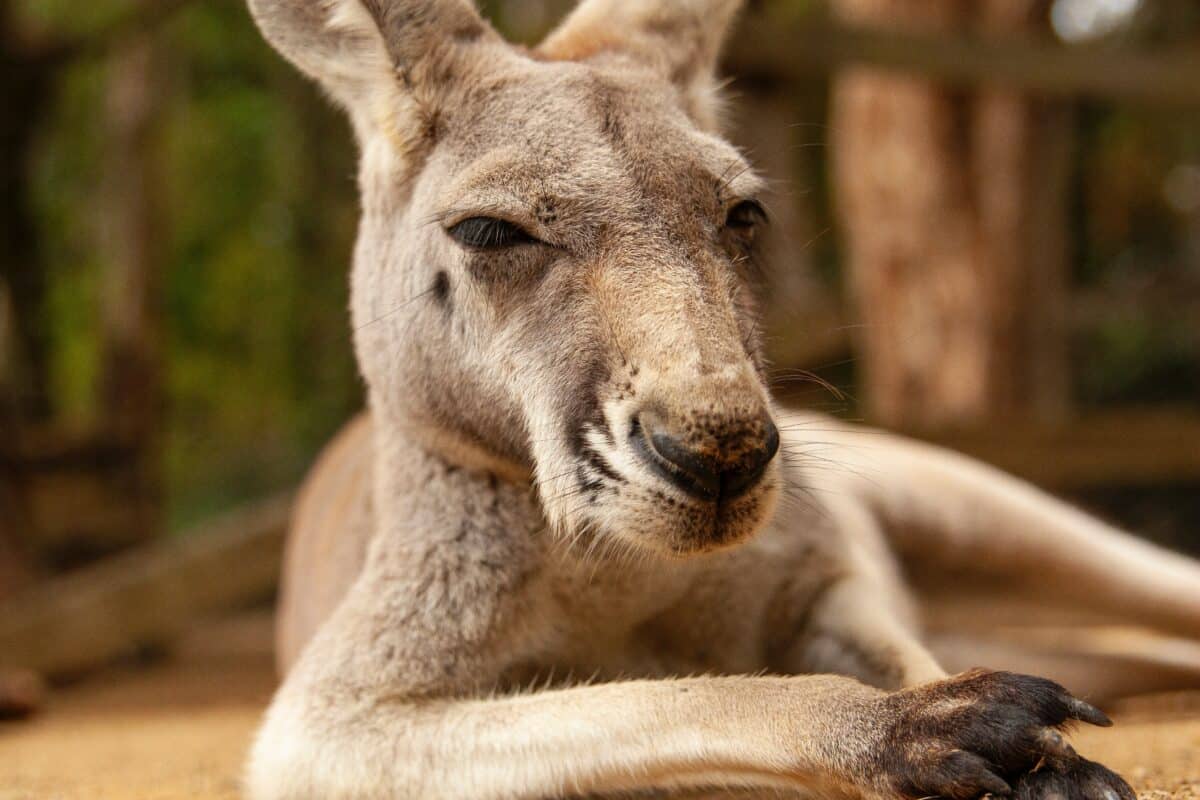
The red Kangaroo (Macropus rufus) is one of the most fascinating animals. Found throughout most of Australia, these iconic marsupials are the largest kangaroo species and the largest terrestrial mammal in the country.
The red Kangaroo is fascinating to observe and report on due to its unique adaptations and behavior. For starters, it is a highly efficient jumper, capable of covering up to 25 feet (7.6 meters) in a single bound and reaching speeds of up to 35 miles per hour (56 kilometers per hour). This makes it well-suited for life in the arid and semi-arid regions of Australia where it lives.
As a herbivore, the red Kangaroo has evolved several adaptations to help it survive in its harsh environment. For example, it can go for long periods without drinking water, obtaining much of its moisture from the vegetation it eats. Its specialized teeth allow it to grind down rigid plant material, and its digestive system extracts as much nutrition as possible from its food.
Another exciting aspect of the red Kangaroo’s behaviour is its social structure. They live in groups called mobs, ranging in size from just a few individuals to over 100. Mobs usually comprise females and their young, along with a few dominant males. The males will often engage in boxing matches to establish dominance and mating rights, and these fights can be pretty spectacular to witness.
Threaths
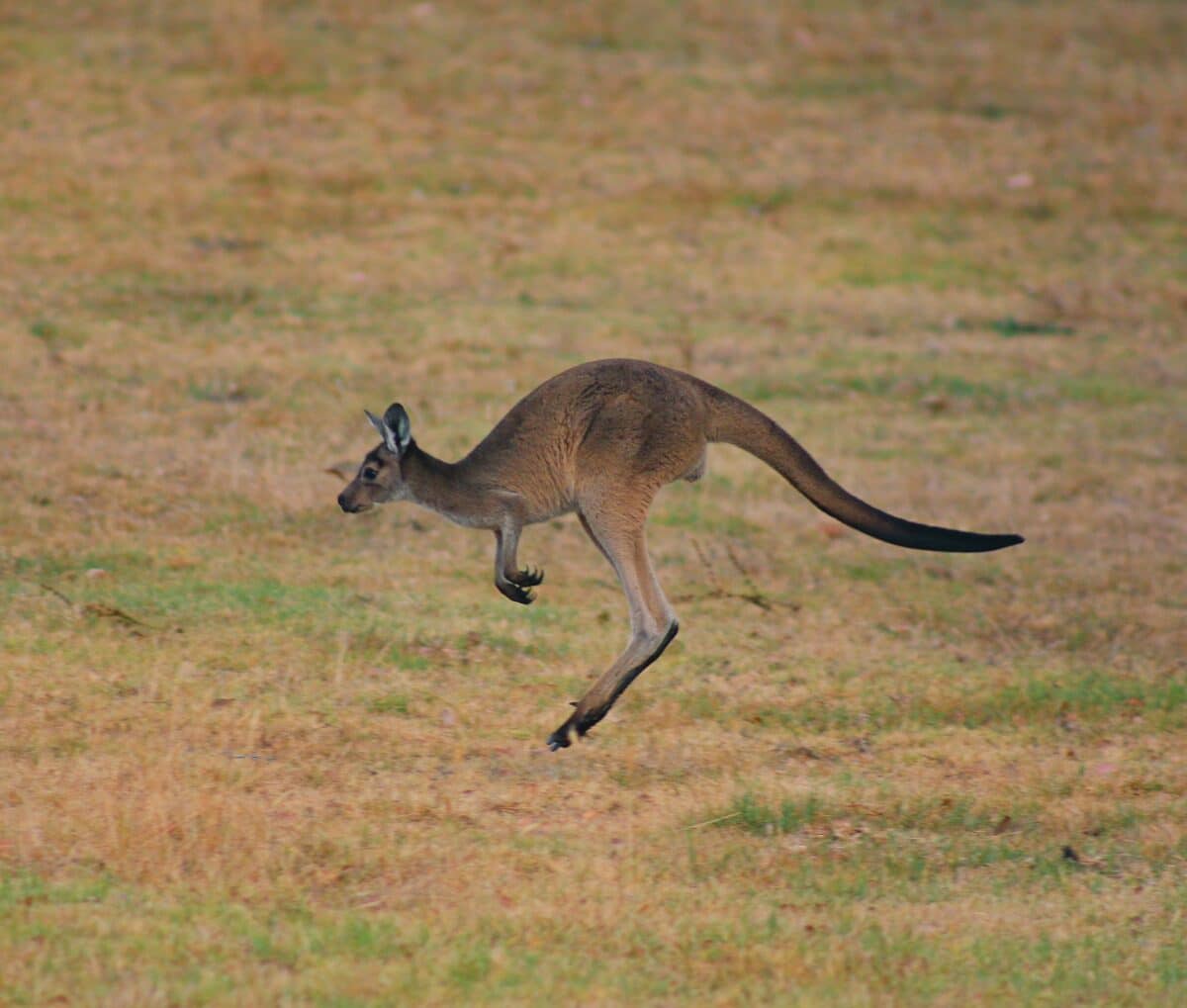
While the red Kangaroo is an iconic and beloved symbol of Australia, it faces several threats to its survival. Habitat loss due to human development, drought, and overgrazing by livestock are all significant factors contributing to declining populations. In addition, red kangaroos are sometimes hunted for their meat and hide, although this is primarily done under strict regulations to ensure sustainability.
As a wildlife enthusiast, it is crucial to highlight these issues and raise awareness about protecting the red Kangaroos. By educating the public about the threats facing this iconic species and highlighting the efforts to conserve it, we can help ensure that future generations can continue to enjoy the wonder of the red Kangaroo in the wild.
Let’s dive deep into the physical characteristics of the kangaroo…
What is the average size of a kangaroo?
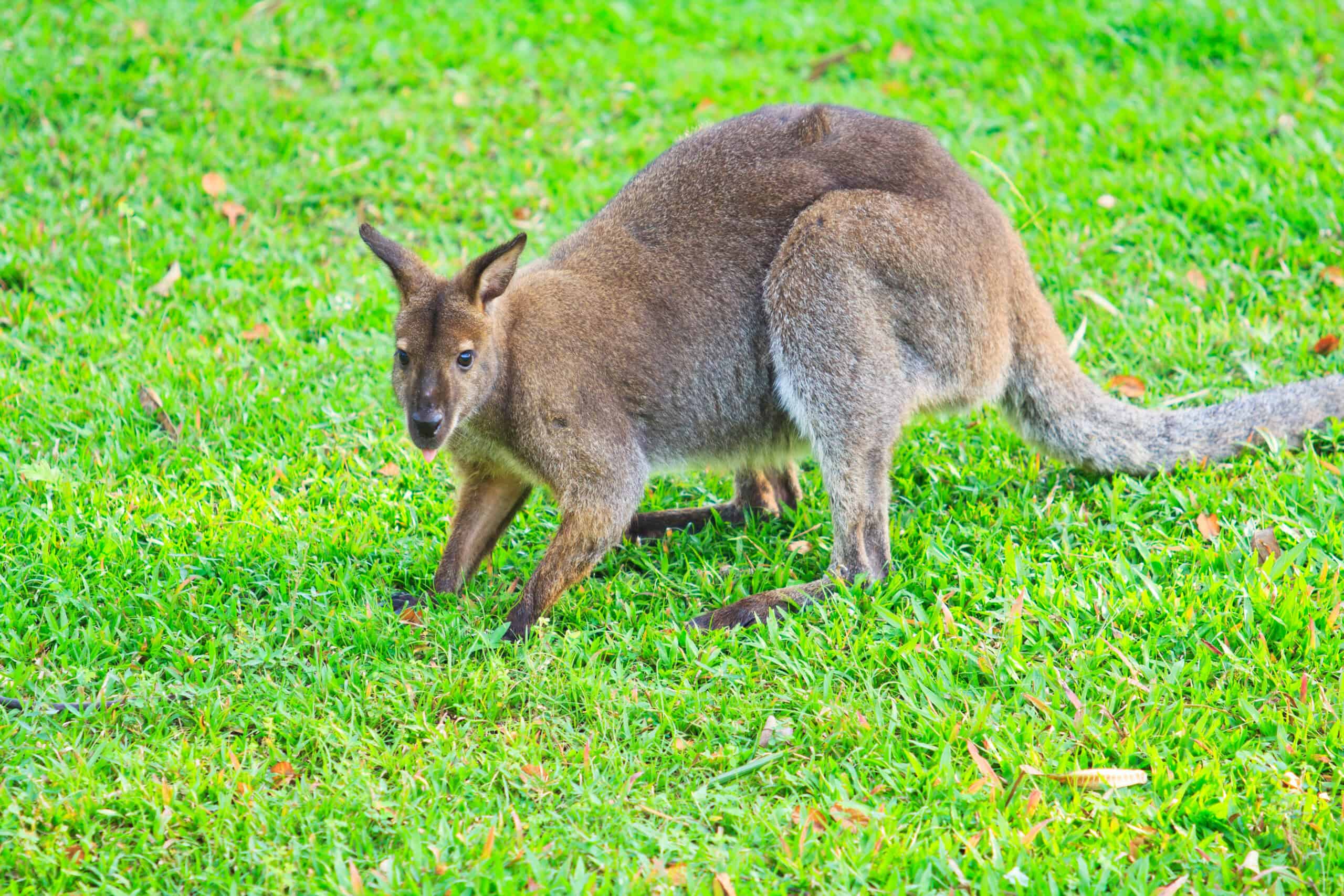
Kangaroos come in different shapes and sizes. The largest species, the red kangaroo, can stand over 6 feet tall and weigh up to 200 pounds, while smaller species like the wallaby are much smaller.
How long do kangaroos live?
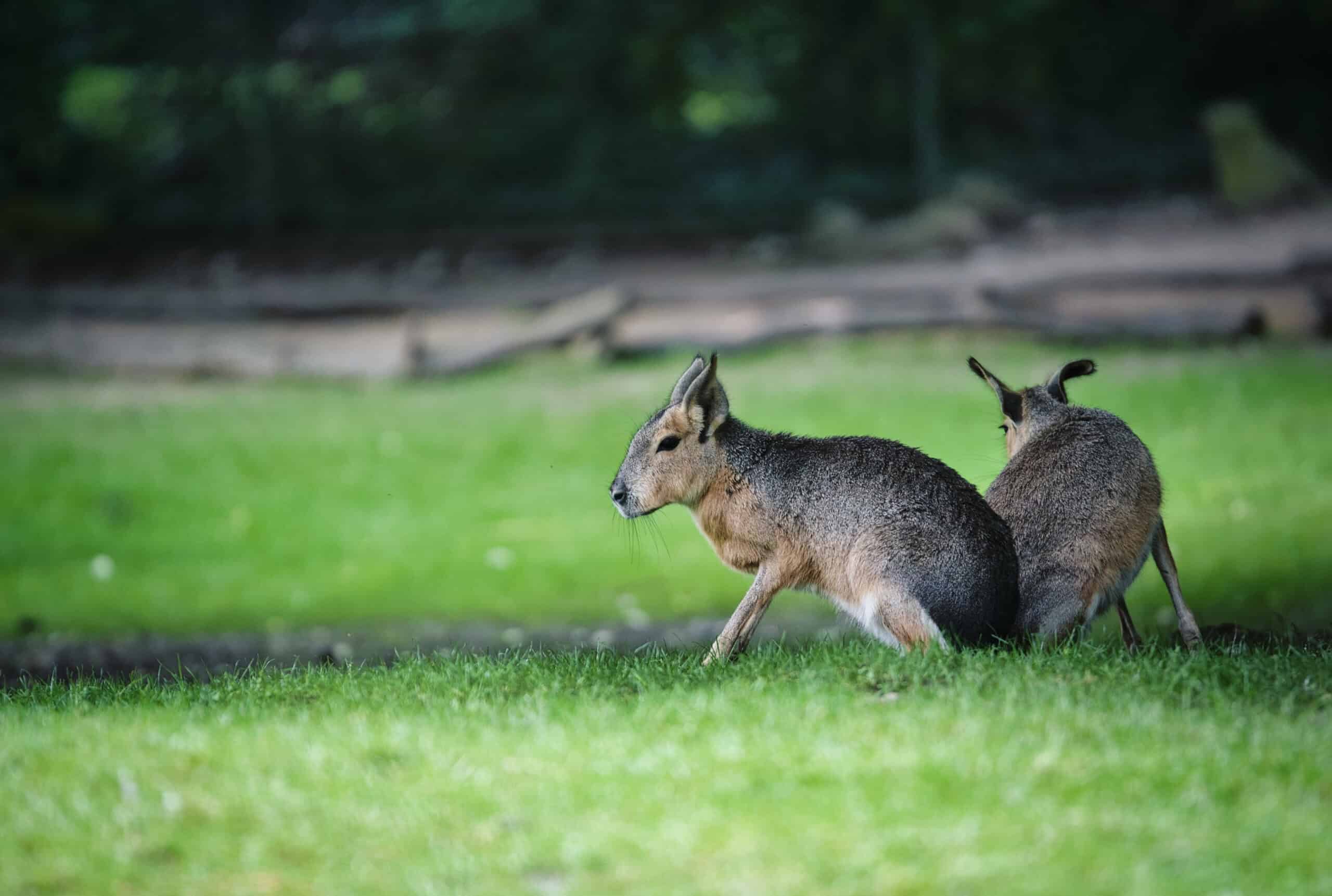
Kangaroos live around 6 to 8 years in the wild, but they can live up to 20 years in captivity!
What color is a kangaroo’s fur?
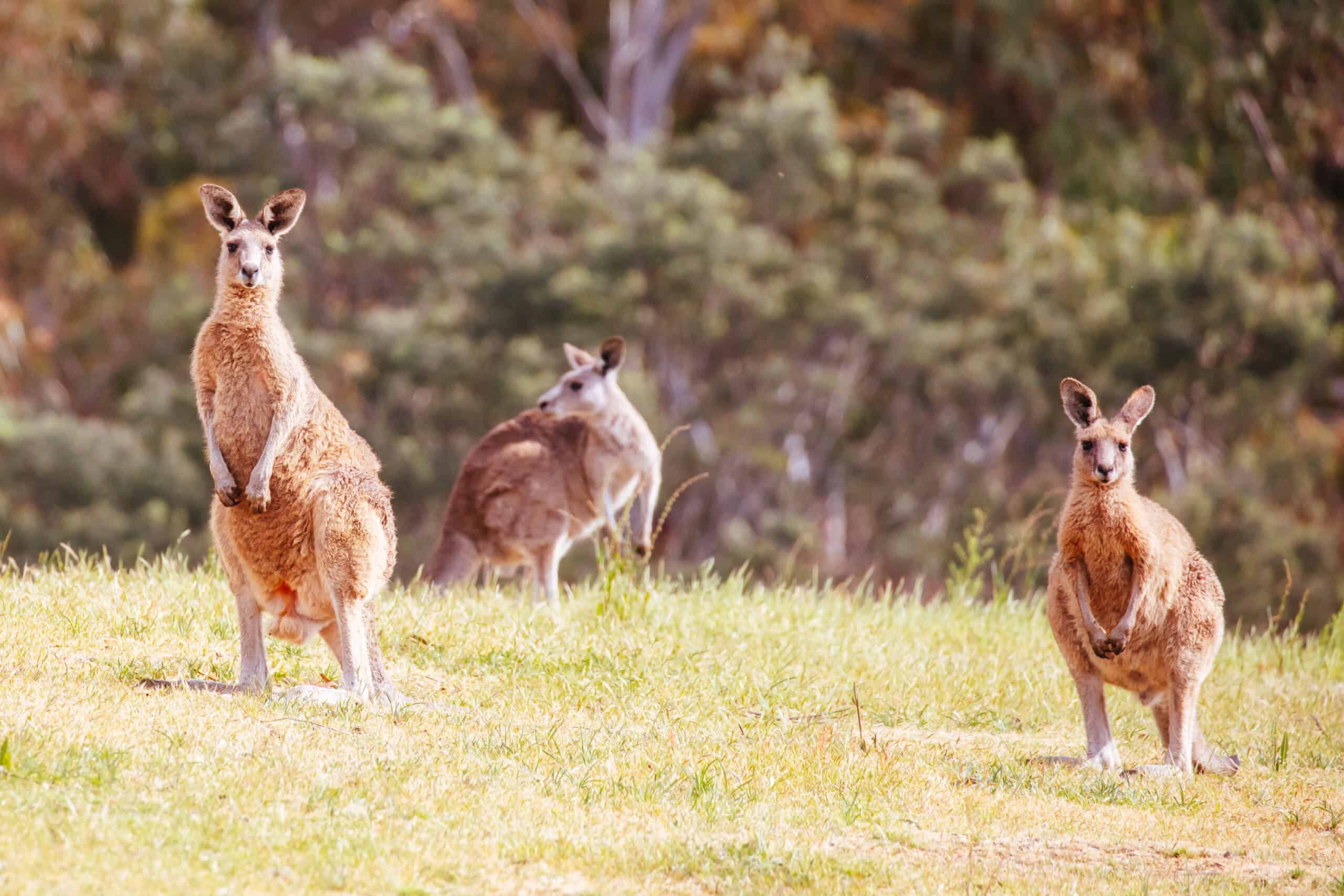
Image via depositphotos.
Kangaroo fur color are different with each species. They rang from reddish-brown in red kangaroos to grey or brown in grey kangaroos.
How powerful are a kangaroo’s legs?

Kangaroo legs are extremely powerful, allowing them to leap distances of up to 30 feet in a single bound! Additionally, they reach speeds of over 35 miles per hour.
How do kangaroos use their tails?

Kangaroo tails are strong and muscular. They give the kangaroo balance while hopping and also act as a third limb to support their weight when standing or moving slowly.
What do kangaroos eat?

Kangaroos are herbivores. They have a chambered stomach that helps them digest fibrous plant material efficiently.
How do kangaroos communicate?

Kangaroos communicate through vocalizations. Such as body postures and foot thumps. They may grunt, cough, or make clicking sounds.
What kind of habitats do kangaroos prefer?

Kangaroos live in different environments, from arid deserts and open plains to forests and coastal regions. They are adaptable and can thrive in Australian landscapes.
How do kangaroos care for their young?

Female kangaroos give birth to tiny, undeveloped joeys that crawl into the mother’s pouch to continue developing. Joeys stay in the pouch for about six months before leaving.
Are kangaroos solitary or social animals?

Image via depositphotos.
Kangaroos are social animals that live in groups called mobs. Mobs can range from a few individuals to several dozen.
How do kangaroos defend themselves from predators?
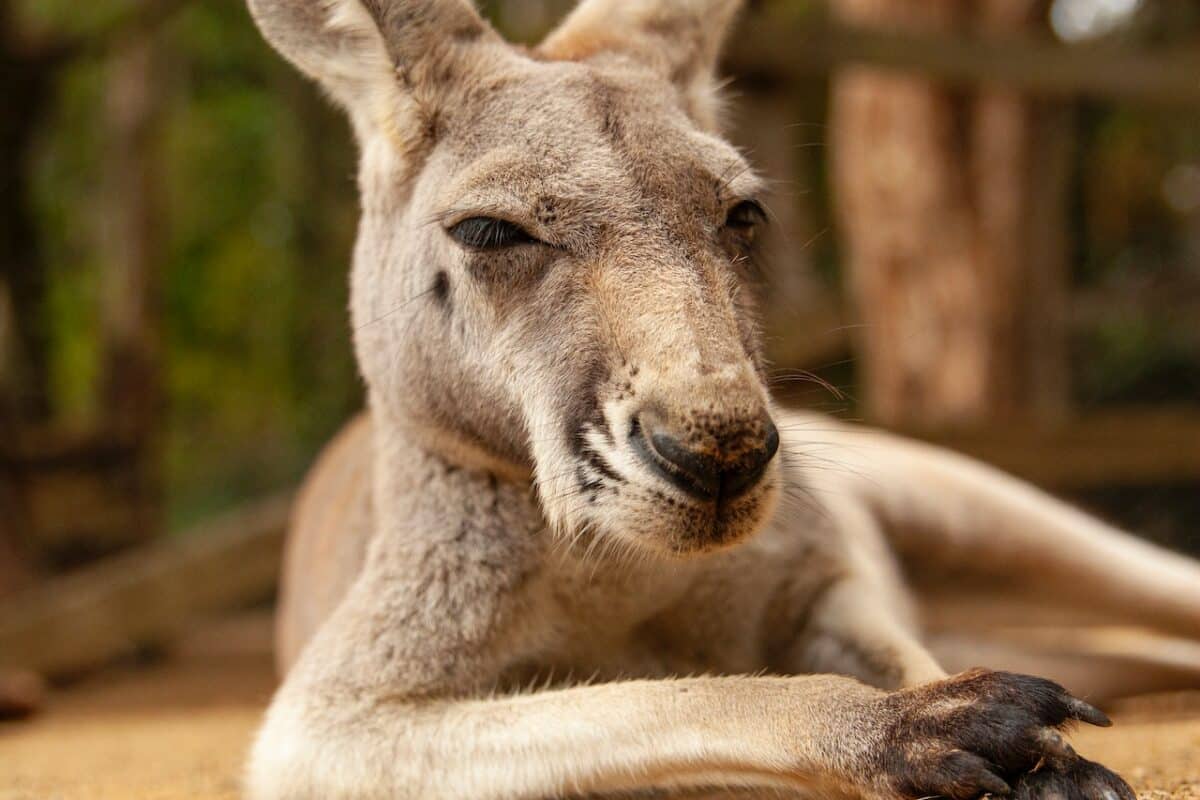
Kangaroos use their powerful hind legs to deliver strong kicks to predators. They can also use their sharp claws.
What are the main threats to kangaroos?
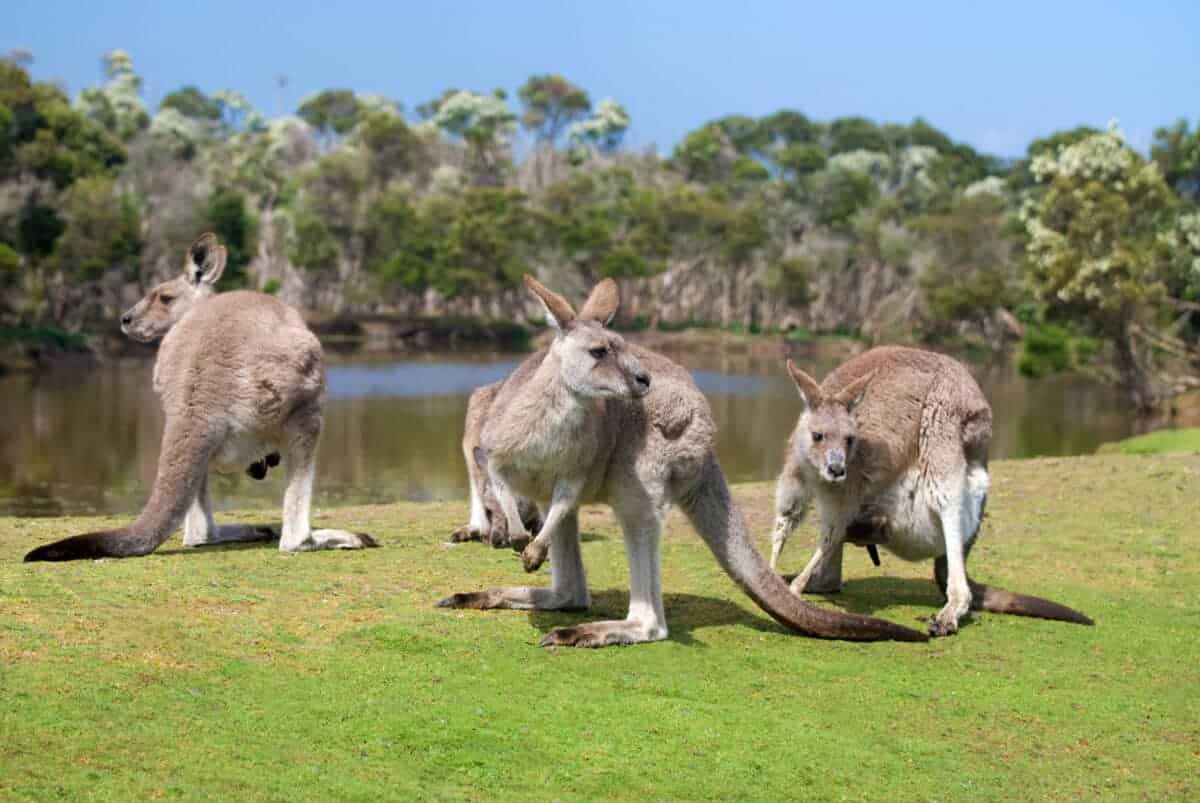
Kangaroos face threats from habitat loss, vehicle collisions, and hunting. Predators such as dingoes and eagles also pose risks to joeys and smaller species.
How do kangaroos contribute to their ecosystem?
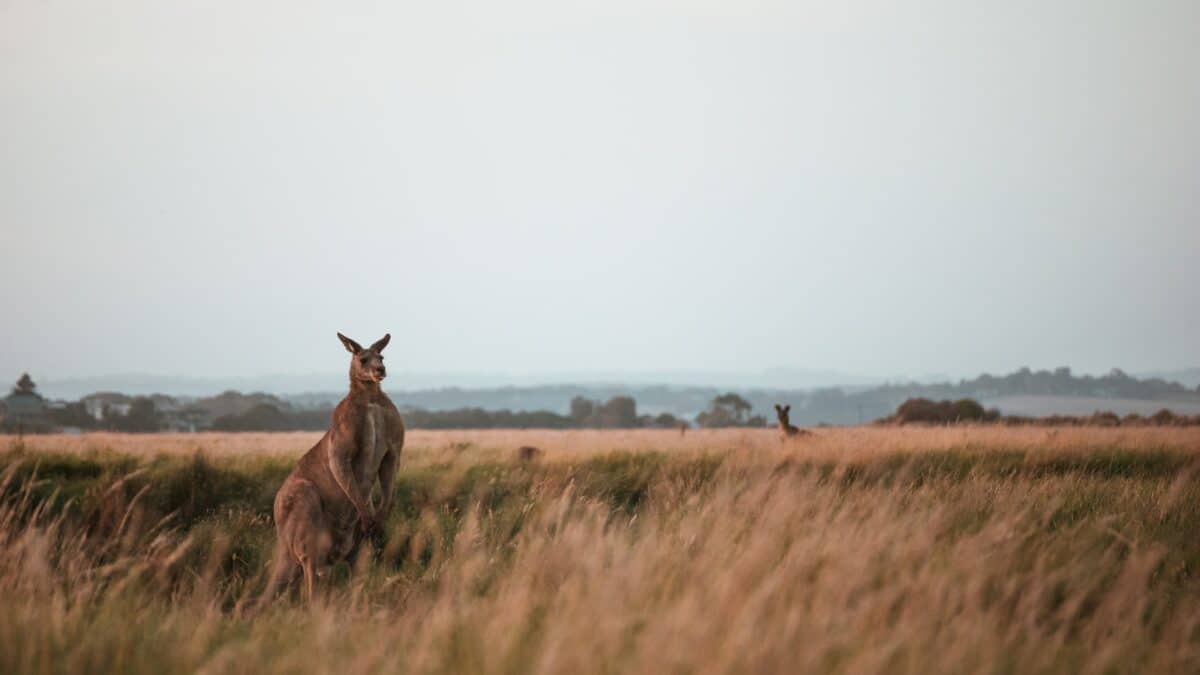
Kangaroos play a role in their ecosystem by grazing on grasses. This helps keep plant diversity and prevent overgrowth. Addiotnally, their movements spread seeds.
How do kangaroos adapt to arid environments?
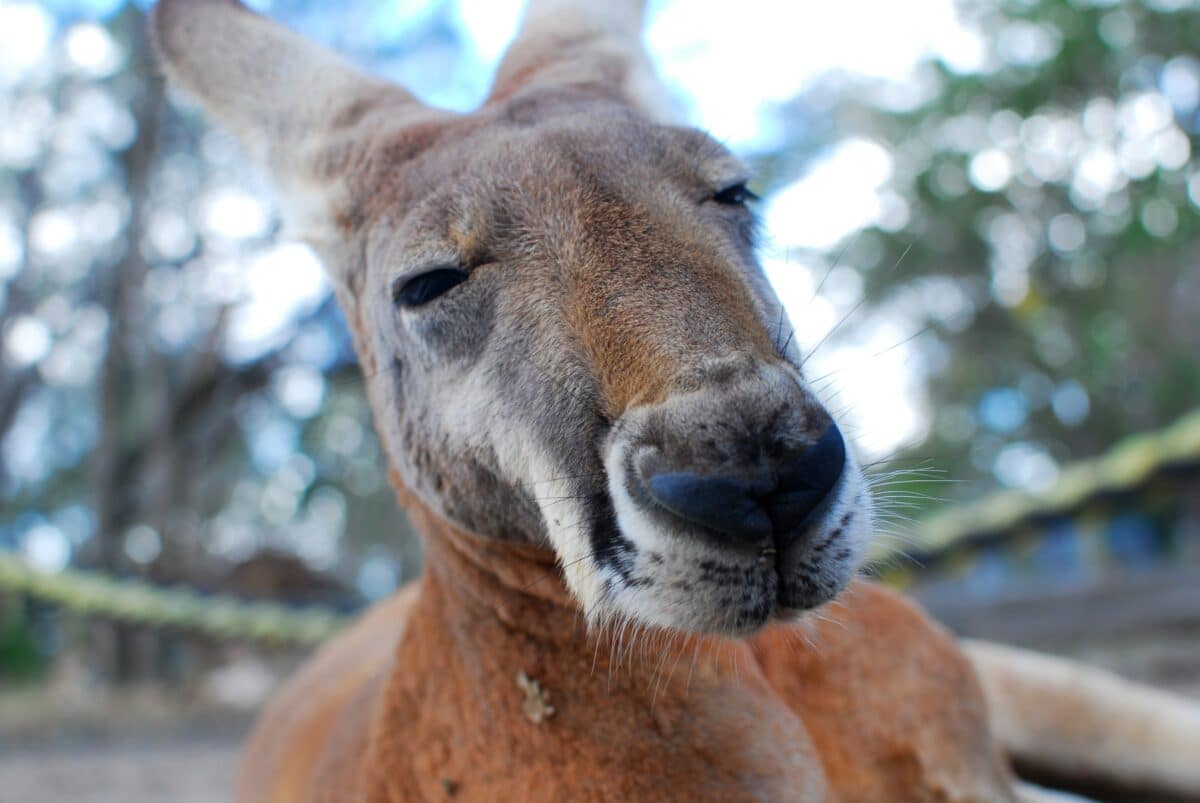
Kangaroos have adapted to arid environments by being able to survive on minimal water. They can extract moisture from their food and conserve water through efficient digestion and minimal sweating!
The Bottomline
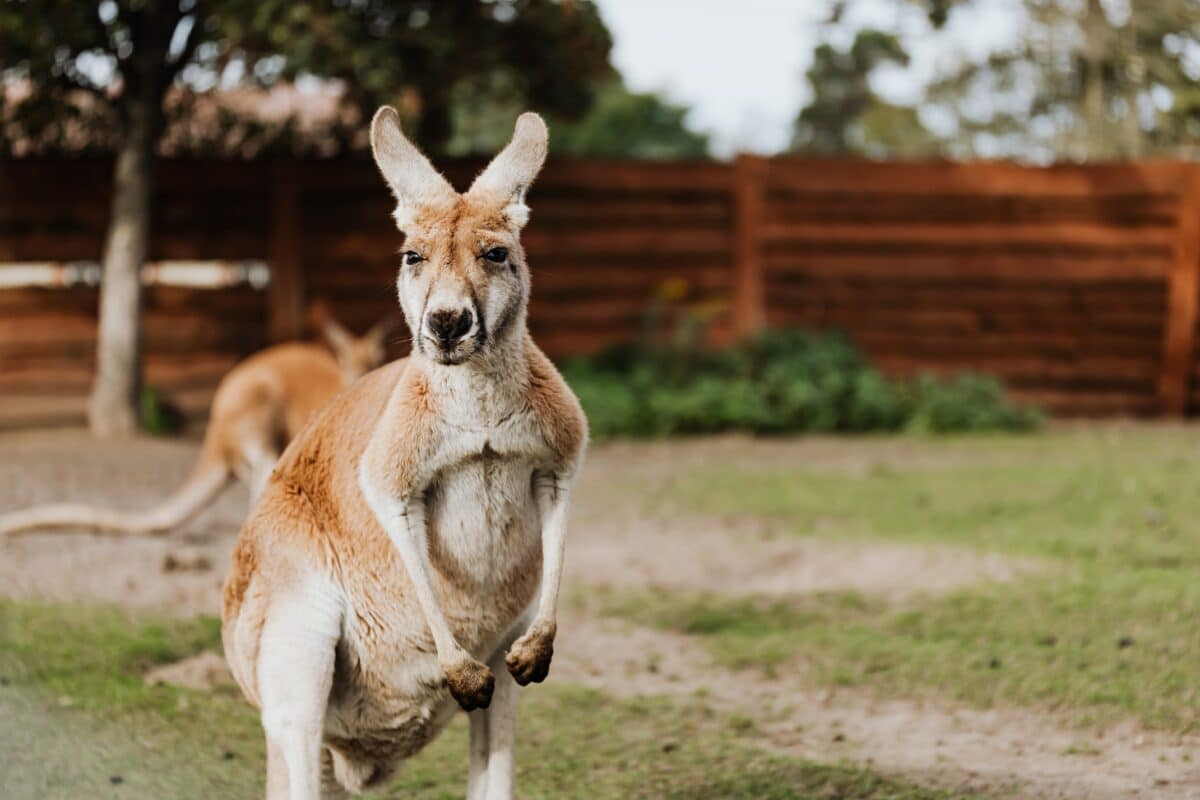
As a wildlife enthusiast, the story of Big Jake, the largest Kangaroo ever recorded, is genuinely fascinating. With an impressive height of 2.1 meters (6 feet, 10 inches) and weighing 95 kilograms (209 pounds). Big Jake’s size and strength set him apart from his peers.
Despite his dominance over other kangaroos, he was known for his gentle nature. He quickly became a favorite among visitors to the wildlife park where he lived out his days.
The red Kangaroo, on the other hand, is the largest kangaroo species and the largest terrestrial mammal in Australia. These iconic marsupials are highly efficient jumpers and have several adaptations to help them survive in their harsh environment. For instance, being able to go for long periods without drinking water.
However, they face several threats to their survival, including habitat loss, drought, and overgrazing by livestock. It is crucial to raise awareness and take action to protect them and their habitat.
Thank you for following along with this article!
Next up in the animal-news world:
- The Record-Breaking Size of the Largest Orca Whale
- Meet Frosty: The Leucistic Orca Calf
- The Largest Whale Shark Ever Recorded – 47,000 Pounds
- The Tail of the “Man-Eater of Mfuwe”
- Mass Deaths of Dolphins in the Black Sea Linked to the Russians
- Pregnant Hammerhead Shark Washes Ashore in Alabama
- 2,000 Endangered Rhinos to the Highest Bidder
Join our Forum for free today!

- 400-Pound Therapy Llamas named Beni and Prince Ease Travelers’ Stress at Portland International Airport - July 22, 2024
- Woman Captured Howling with Gigantic White Wolf in Beautiful Footage - July 22, 2024
- Florida Police Urge Public to Stop Taking Selfies with ‘Depressed’ Black Bear off Highway 98 in Santa Rosa Beach - July 22, 2024

